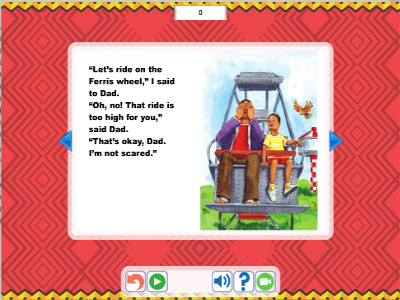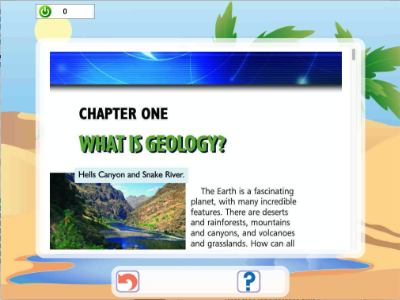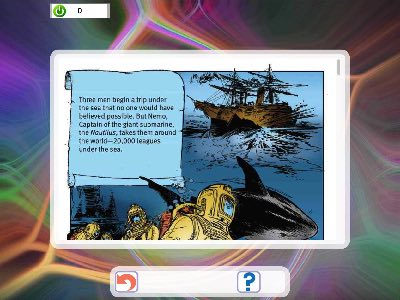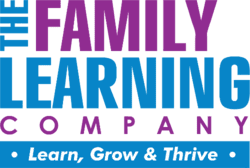Multi-Generational Content to Improve Reading

Multigenerational learning, often embedded within family literacy initiatives, enhances reading skills and fosters a collective effort to improve reading. By bridging generations, it nurtures an environment conducive to sharing knowledge, honing reading skills, and collectively contributing to enhanced literacy via family engagement. One way to see this multi-generational learning is the kinds of readings included for children, youth, and adults, from children's picture books to hi-lo readers, to life-skill readings. One way to see this multi-generational learning is vocabulary development, starting with oral language vocabulary, moving to high-frequency words, then focusing on academic vocabulary, and finally vocabulary integrated with the readings.

Early Family Literacy
The Early Literacy module of Interactive Family Literacy is designed for children between the ages of 3-5 in preschool and Head Start programs, as well as Kindergarten. The content is organized into five subjects: Feelings, Sounds, Reading, Words, and Writing. The Phonics content includes phonological awareness and phonemic awareness. The readings are all children’s picture books, some from the U.S. and some from Africa. They are primarily fiction, but include some non-fiction. They are “read” to children at the lower levels and children are supported reading them at upper-levels. Even at the upper levels, children can have the books read them, if they want. All words are oral language vocabulary activities, matching pictures and audio of words, not the words themselves. The Spanish module reflects an immersion approach, that is, all the content is in Spanish. Click here to see the High School Family Literacy videos.

Elementary Family Literacy
The Elementary Literacy module of Interactive Family Literacy is designed for children between the ages of 5-9 in Grades K-3. The content is organized into four subjects: Phonics, Reading, Vocabulary, and Writing. The Phonics content includes phonemic awareness and decoding, covering all the Orton-Gillingham skills. The readings are all children’s picture books. They are primarily fiction, but include some non-fiction. At all levels, children can listen or read; at upper levels they read with a timer to develop fluency. The e-books increase in difficulty as the levels of the software increase. All words are from a combination of three sources of high-frequency words: EDL, Dolce, and Fry. The writing content includes skill activities along with open-ending writing. The Spanish module reflects an immersion approach, that is, all the content is in Spanish. Click here to see the Elementary Family Literacy videos.

Elementary STEM Family Literacy
The Elementary STEM Literacy module of Interactive Family Literacy is designed for children between the ages of 10-12 in Grades 4-6. The content is organized into four subjects: Phonics, Reading, Vocabulary, and Writing. The Phonics content includes phonemic awareness and decoding, covering all the Orton-Gillingham skills. The readings are a mixture of children’s picture books and chapter books. The readings are a mixture of fiction and non-fiction titles. At all levels, children can read with a timer to develop fluency. All words are STEM vocabulary, that is, science, technology, engineering, and math. The writing content includes skill activities along with open-ending writing. The Spanish module reflects a transition approach, that is, all the content is in English and all the Help and menus are in Spanish. Click here to see the Elementary STEM Family Literacy videos.

Middle School Family Literacy
The Middle School Literacy module of Interactive Family Literacy is designed for children between the ages of 11-15 in Grades 5-8. The content is organized into four subjects: Phonics, Reading, Vocabulary, and Writing. The Phonics content includes phonemic awareness and decoding, covering all the Orton-Gillingham skills. Most of these books are hi-lo readers, that is, high interest/low reading level readers. There are also some graphic novels and a number of illustrated non-fiction e-books. There are always lots of words, but the reading level increases from Grade 2 to middle school as the software level increases. All words are academic vocabulary, that is, language arts, science, and math. The writing content includes skill activities along with open-ending writing. The Spanish module reflects a transition approach, that is, all the content is in English and all the Help and menus are in Spanish. Click here to see the Middle School Family Literacy videos.

High School Family Literacy
The High School Literacy module of Interactive Family Literacy is designed for children between the ages of 15-18 in Grades 9-12. The content is organized into four subjects: Phonics, Reading, Vocabulary, and Writing. The Phonics content includes phonemic awareness and decoding, covering all the Orton-Gillingham skills. Most of these books are hi-lo readers, that is, high interest/low reading level readers. There are also some graphic novels and a number of life-skill readings. There are always lots of words, but the reading level increases from Grade 2 to high school as the software level increases. All words are academic vocabulary, that is, language arts, science, and math. The writing content includes skill activities along with open-ending writing. The Spanish module reflects a transition approach, that is, all the content is in English and all the Help and menus are in Spanish. Click here to see the High School Family Literacy videos.

Adult Family Literacy
The Adult Literacy module of Interactive Family Literacy is designed for adults of any age. The content is organized into three subjects: Phonics, Reading, and Writing. The Phonics content includes phonological awareness, phonemic awareness and decoding, covering all the Orton-Gillingham skills. All of the reading selections are adult life-skill readings, such as wearing gloves at work, taking children to the dentist, walking form a better life, checking your blood pressure, and getting to work on time. They increase in difficulty from (adult) Grade 1 to Grade 8 over the sixteen levels of the software. All vocabulary words are related to the readings. The writing content includes skill activities along with open-ending writing. The Spanish module reflects a transition approach, that is, all the content is in English and all the Help and menus are in Spanish.Click here to see the Adult Family Literacy videos.
